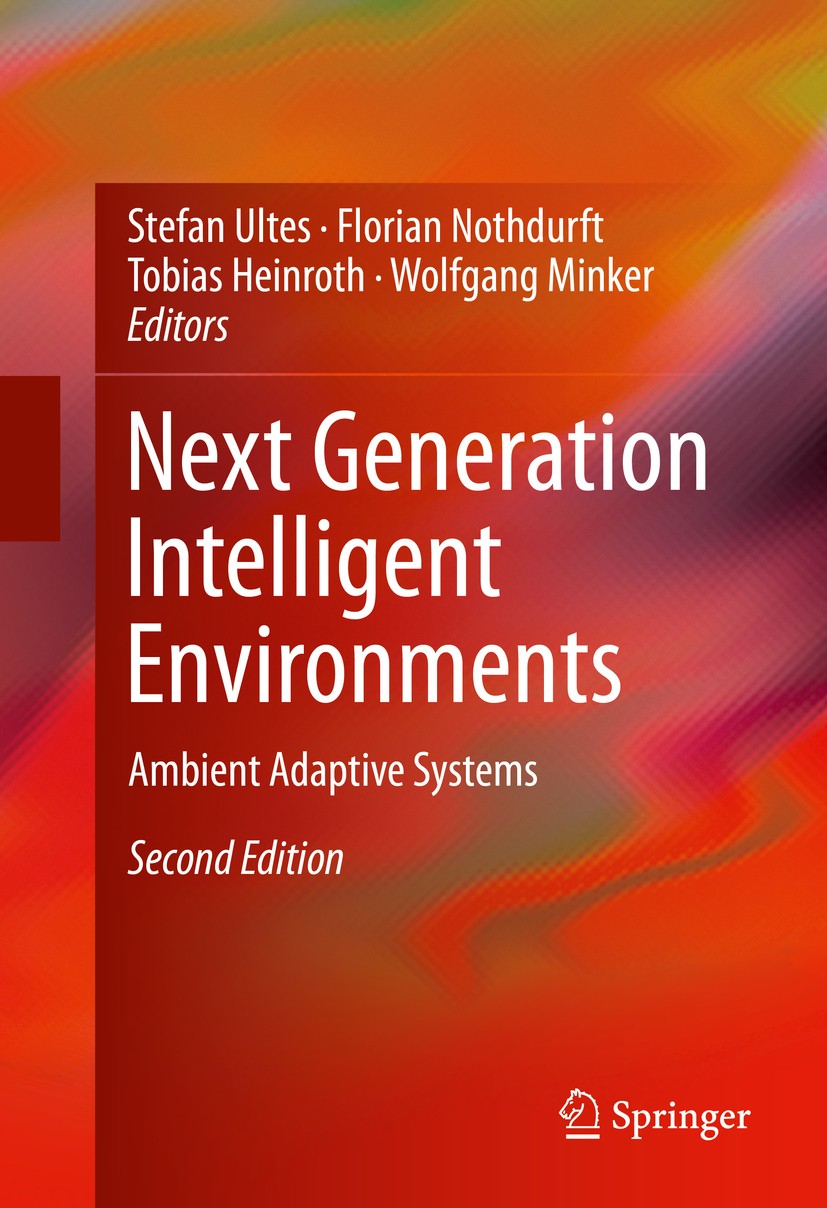| 书目名称 | Next Generation Intelligent Environments |
| 副标题 | Ambient Adaptive Sys |
| 编辑 | Stefan Ultes,Florian Nothdurft,Wolfgang Minker |
| 视频video | http://file.papertrans.cn/667/666205/666205.mp4 |
| 概述 | Covers the field of intelligent environments research and evaluation.Examines hot topics such as adaptation within activity spheres and intelligent ambient adaptive systems.Presents in-depth analysis |
| 图书封面 |  |
| 描述 | .This book covers key topics in the field of intelligent ambient adaptivesystems. It focuses on the results worked out within the framework of theATRACO (Adaptive and TRusted Ambient eCOlogies) project. The theoreticalbackground, the developed prototypes, and the evaluated results form a fertileground useful for the broad intelligent environments scientific community aswell as for industrial interest groups..The new edition provides:.. .Chapter authors comment on their work on ATRACO with final remarks as viewed in retrospective. .Each chapter has been updated with follow-up work emerging from ATRACO. .An extensive introduction to state-of-the-art statistical dialog management for intelligent environments . .Approaches are introduced on how Trust is reflected during the dialog with the system .. |
| 出版日期 | Book 2016Latest edition |
| 关键词 | Activity Sphere; Adaptive Networking; Advanced Intelligent Environments; Ambient Adaptive Systems; Ambie |
| 版次 | 2 |
| doi | https://doi.org/10.1007/978-3-319-23452-6 |
| isbn_softcover | 978-3-319-79485-3 |
| isbn_ebook | 978-3-319-23452-6 |
| copyright | Springer International Publishing Switzerland 2016 |
 |Archiver|手机版|小黑屋|
派博传思国际
( 京公网安备110108008328)
GMT+8, 2025-11-13 07:21
|Archiver|手机版|小黑屋|
派博传思国际
( 京公网安备110108008328)
GMT+8, 2025-11-13 07:21


